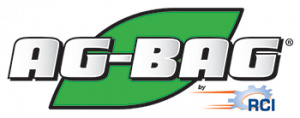News and Events
Staying safe in the cab during the COVID-19 pandemic
Posted On: July 07, 2020
By John Shutske, Extension Agricultural Safety and Health Specialist
With COVID-19 dominating news cycles everywhere on the planet, there are a few questions that have come up for minimizing risk for those who operate farm tractors, trucks, and other enclosed ag equipment—especially when the same machine is being operated over the course of a day or work week by multiple people. When you have employees or others who might be trading off and using the same machine it’s important to minimize risk. Even if a person appears healthy, shared equipment should be cleaned between operators. Some specifics include:
Every operator should start each workday/shift with clean and laundered clothing. Everyone should shower since their last contact with the “public” and/or since their last work shift.
Between operators – if possible, leave cab windows/doors as open as possible (as long as the machine is parked in a secure location). Wind blowing through the cab will help clear and clean the air in the cab.
As you approach a vehicle to begin a day or shift – consider EVERY part/location that might have been touched by the last operator – this includes handholds, fuel tank caps, ladders, oil dipsticks and door handles. These should be wiped down thoroughly. Also consider wiping down hitches, wagon tongues, and hitch pins on equipment. When cleaning, wear waterproof protective gloves – then remove and store these carefully when cleaning is complete both inside and outside the operator’s station.
Several options exist for cleaning. The virus is broken down with soapy warm water and a wet towel/cloth. Some operators are using antibacterial “wipes” or other commercial spray cleaners. Another option that kills and breaks down the virus is a diluted bleach/water solution. CDC recommends 1/3-cup of household bleach per gallon of water OR 4 teaspoons of bleach per quart of water applied generously through a spray bottle. Bleach/water solution should only be applied to hard, non-porous surfaces. When bleach-water solution is used, it should be sprayed on and allowed to dry. Never apply bleach directly to cloth, fabric, electronic components, the operator’s panel, touch screens, etc. While bleach/water is effective against the virus, it may permanently stain clothing and other fabric or damage some components in the cab.
Wipe down EVERYTHING that may have been touched, sneezed or coughed on, or otherwise exposed to the previous operator. This includes the steering wheel, throttle, all levers/controls, knobs on heater/AC, door handles, window levers, etc. Again, warm soapy water or other disinfecting products are recommended. Windows can be wiped down with warm, soapy water and then finished with window cleaner.
Do not use harsh cleaners on electronic parts, touch screens or other components. Check the operator’s manual. Consider carrying a pocketful of cleaning wipes that have isopropyl alcohol (which kills the virus) to wipe down these parts. Also, use these wipes to frequently clean your eyeglasses (including sunglasses) and your smartphone.
Once things are wiped down in the cab and you are ready to roll, remove and store protective gloves and use some gel or foam hand sanitizer. If you keep hand sanitizer in the cab (recommended) – keep it out of direct sunlight and know that over time some of the alcohol will evaporate (even though it is sealed) – so replace often.
Consider more frequent cab air filter changeouts – most air handling systems are bringing in and filtering outside air. While there are no known concerns about these filters spreading virus, air movement in the cab during operation is important and a clean filter will help insure maximum airflow and comfort for the operator.
With all of these precautions, some operators are also purchasing and using a bundle of thick cotton work gloves they can wear throughout the day – changing gloves frequently between tasks (like hitching/unhitching) or touching any surface not known for sure to have been cleaned. Used and dirty cotton gloves can then be thrown into a sealed plastic bag and laundered each night with other work clothes. Do not use cloth gloves for tasks that involve liquids/wet conditions. Never use leather gloves for virus protection – they cannot be laundered and could harbor the virus. Waterproof gloves will also provide protection and should be used during cleaning but are not durable and are not comfortable for long term use for most people.
While hand sanitizers and gloves do help by killing or reducing contact with the virus, nothing beats handwashing. Wash with soap, warm water, and scrub hands thoroughly for at least 20 seconds. Dry with a CLEAN paper towel.
Staying safe and healthy during these times require that you think like a “CSI investigator” and consider how and where the virus might spread. It takes a little bit of extra work and care, but your health is vital, and our growing world population needs you!
With COVID-19 dominating news cycles everywhere on the planet, there are a few questions that have come up for minimizing risk for those who operate farm tractors, trucks, and other enclosed ag equipment—especially when the same machine is being operated over the course of a day or work week by multiple people. When you have employees or others who might be trading off and using the same machine it’s important to minimize risk. Even if a person appears healthy, shared equipment should be cleaned between operators. Some specifics include:
Every operator should start each workday/shift with clean and laundered clothing. Everyone should shower since their last contact with the “public” and/or since their last work shift.
Between operators – if possible, leave cab windows/doors as open as possible (as long as the machine is parked in a secure location). Wind blowing through the cab will help clear and clean the air in the cab.
As you approach a vehicle to begin a day or shift – consider EVERY part/location that might have been touched by the last operator – this includes handholds, fuel tank caps, ladders, oil dipsticks and door handles. These should be wiped down thoroughly. Also consider wiping down hitches, wagon tongues, and hitch pins on equipment. When cleaning, wear waterproof protective gloves – then remove and store these carefully when cleaning is complete both inside and outside the operator’s station.
Several options exist for cleaning. The virus is broken down with soapy warm water and a wet towel/cloth. Some operators are using antibacterial “wipes” or other commercial spray cleaners. Another option that kills and breaks down the virus is a diluted bleach/water solution. CDC recommends 1/3-cup of household bleach per gallon of water OR 4 teaspoons of bleach per quart of water applied generously through a spray bottle. Bleach/water solution should only be applied to hard, non-porous surfaces. When bleach-water solution is used, it should be sprayed on and allowed to dry. Never apply bleach directly to cloth, fabric, electronic components, the operator’s panel, touch screens, etc. While bleach/water is effective against the virus, it may permanently stain clothing and other fabric or damage some components in the cab.
Wipe down EVERYTHING that may have been touched, sneezed or coughed on, or otherwise exposed to the previous operator. This includes the steering wheel, throttle, all levers/controls, knobs on heater/AC, door handles, window levers, etc. Again, warm soapy water or other disinfecting products are recommended. Windows can be wiped down with warm, soapy water and then finished with window cleaner.
Do not use harsh cleaners on electronic parts, touch screens or other components. Check the operator’s manual. Consider carrying a pocketful of cleaning wipes that have isopropyl alcohol (which kills the virus) to wipe down these parts. Also, use these wipes to frequently clean your eyeglasses (including sunglasses) and your smartphone.
Once things are wiped down in the cab and you are ready to roll, remove and store protective gloves and use some gel or foam hand sanitizer. If you keep hand sanitizer in the cab (recommended) – keep it out of direct sunlight and know that over time some of the alcohol will evaporate (even though it is sealed) – so replace often.
Consider more frequent cab air filter changeouts – most air handling systems are bringing in and filtering outside air. While there are no known concerns about these filters spreading virus, air movement in the cab during operation is important and a clean filter will help insure maximum airflow and comfort for the operator.
With all of these precautions, some operators are also purchasing and using a bundle of thick cotton work gloves they can wear throughout the day – changing gloves frequently between tasks (like hitching/unhitching) or touching any surface not known for sure to have been cleaned. Used and dirty cotton gloves can then be thrown into a sealed plastic bag and laundered each night with other work clothes. Do not use cloth gloves for tasks that involve liquids/wet conditions. Never use leather gloves for virus protection – they cannot be laundered and could harbor the virus. Waterproof gloves will also provide protection and should be used during cleaning but are not durable and are not comfortable for long term use for most people.
While hand sanitizers and gloves do help by killing or reducing contact with the virus, nothing beats handwashing. Wash with soap, warm water, and scrub hands thoroughly for at least 20 seconds. Dry with a CLEAN paper towel.
Staying safe and healthy during these times require that you think like a “CSI investigator” and consider how and where the virus might spread. It takes a little bit of extra work and care, but your health is vital, and our growing world population needs you!





















